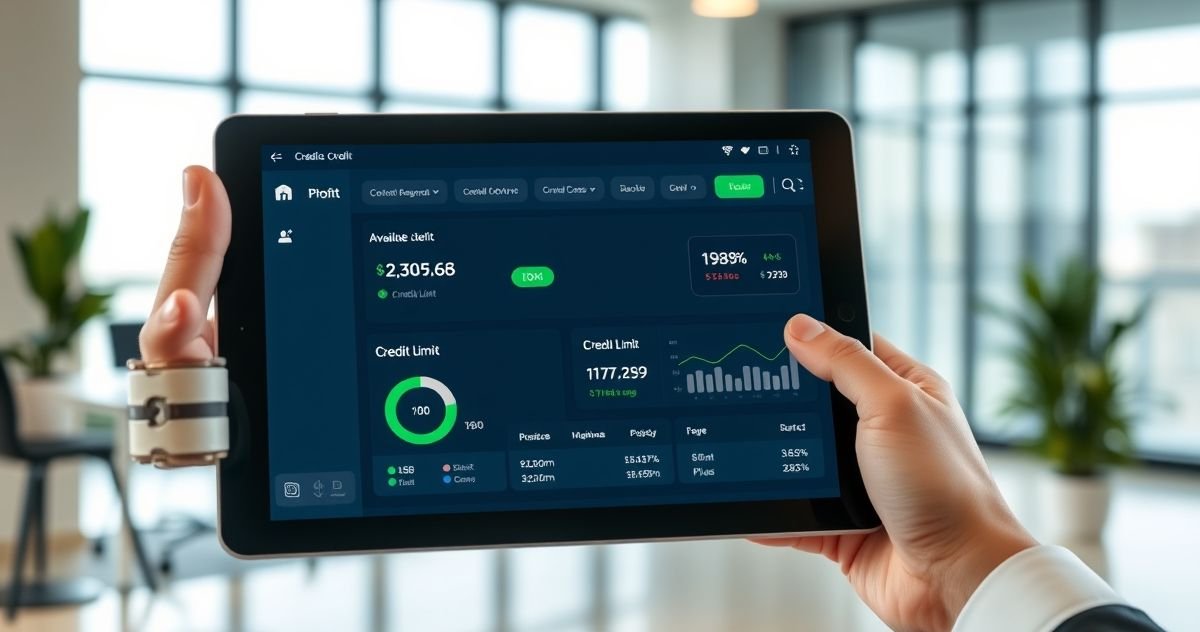How a Business Line of Credit Works
Think of a business line of credit like a financial safety net you can use, put back, and use again. The process follows a simple cycle:
- Application and Approval: You apply with a lender (like a bank, credit union, or online lender) who assesses your business’s financial health. They review factors like annual revenue, time in business, and your business and personal credit scores. If approved, they grant you a specific credit limit, such as $50,000.
- Drawing Funds: When you need cash—for instance, $10,000 to cover payroll while waiting on a client payment—you “draw” it from your line of credit. The funds are typically transferred directly to your business bank account.
- Interest and Repayment: Interest only accrues on the amount you’ve borrowed ($10,000 in this case), not the entire credit limit. You make regular payments (usually monthly) to pay down the principal and interest.
- Replenishing Credit: As you repay the borrowed amount, your available credit is restored. Once you pay back the full $10,000, your entire $50,000 credit limit is available to use again. This is known as revolving credit.
Secured vs. Unsecured Lines of Credit
Like other business financing, lines of credit come in two primary types:
- Secured Line of Credit: This type is backed by collateral, such as inventory, accounts receivable, or commercial real estate. Because the lender’s risk is lower, secured lines often feature higher credit limits and more favorable interest rates.
- Unsecured Line of Credit: This does not require specific collateral, making it a riskier proposition for lenders. Approval relies heavily on strong business revenue and credit history. As a result, unsecured lines typically have lower limits and higher interest rates.
Pros and Cons of a Business Line of Credit
Understanding the benefits and drawbacks is key to using this tool wisely.
Pros:
- Flexibility: Draw funds whenever you need them, for any business purpose.
- Cash Flow Management: It’s an ideal solution for managing seasonal lulls or bridging the gap between invoicing clients and receiving payment.
- Cost-Effective: You only pay interest on the funds you actively use, which can save you money compared to a traditional loan.
- Readiness: It acts as an on-demand emergency fund for unexpected costs or a way to seize time-sensitive business opportunities.
Cons:
- Requires Discipline: The easy access to cash can lead to borrowing for non-essential expenses if not managed carefully.
- Potential Fees: Be aware of possible annual fees, draw fees (charged per withdrawal), and late payment penalties.
- Variable Rates: Most lines of credit have variable interest rates, meaning your payment costs can rise or fall over time.
- Collateral Risk: With a secured line of credit, you risk losing your business assets if you are unable to repay.
When to Use a Line of Credit: Real-World Scenarios
- The Seasonal Business: A landscaping company uses its line of credit in late winter to purchase new equipment and supplies, repaying the funds during its busy spring and summer seasons.
- The Opportunistic Buyer: A retail store owner uses her line of credit to buy a competitor’s inventory at a deep discount, quickly turning it for a profit and repaying the line.
- The Growing Agency: A marketing firm covers payroll and project expenses while waiting on a large client’s 60-day payment terms, ensuring smooth operations without draining cash reserves.
Line of Credit vs. Other Financing Options
It’s easy to confuse lines of credit with other financial products, but their uses are distinct.
- vs. Term Loan: A term loan provides a single lump sum of cash for a specific, large purchase (like real estate or major equipment) and has a fixed repayment schedule. A loan is like buying a full pitcher of water; a line of credit is like having a tap you can turn on and off as needed.
- vs. Business Credit Card: Credit cards are better for small, everyday purchases and often come with rewards programs. Lines of credit are designed for larger working capital needs, typically offer lower interest rates, and deposit cash directly into your bank account.
Frequently Asked Questions (FAQ)
- What are the typical requirements for a business line of credit?
- Lenders generally review your time in business (often preferring at least one year), annual revenue, and both personal and business credit scores. Requirements for online lenders may be more flexible than those for traditional banks.
- Can I get a business line of credit with bad credit?
- While challenging, it may be possible. You will likely have more success applying for a secured line of credit, where you can offer collateral to reduce the lender’s risk. Be prepared for lower credit limits and higher interest rates.
- What fees are associated with a line of credit?
- Common fees include an annual or maintenance fee to keep the line open, a draw fee each time you withdraw funds, and standard late payment penalties. Always read the lender’s terms carefully.
For more information on business funding options, visit the U.S. Small Business Administration (SBA).



